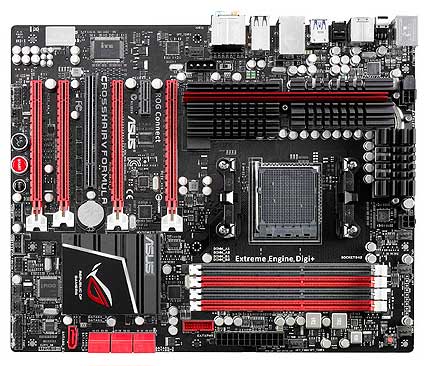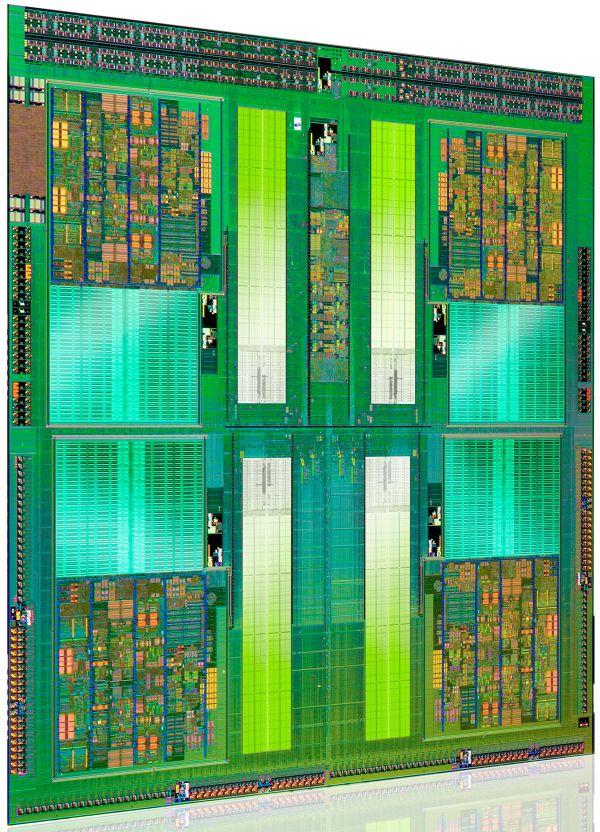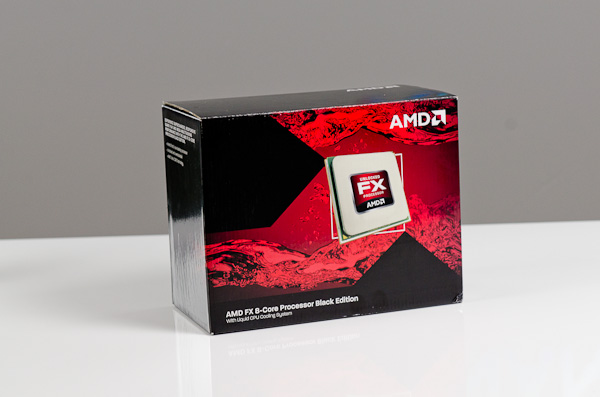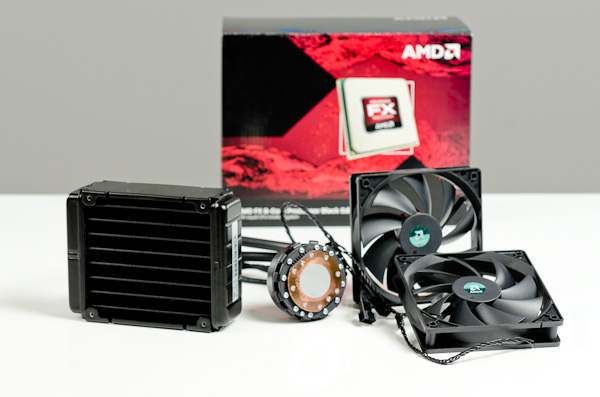The Bulldozer Review: AMD FX-8150 Tested
by Anand Lal Shimpi on October 12, 2011 1:27 AM ESTAMD has been trailing Intel in the x86 performance space for years now. Ever since the introduction of the first Core 2 processors in 2006, AMD hasn't been able to recover and return to the heyday of the Athlon 64 and Athlon 64 X2. Instead the company has remained relevant by driving costs down and competing largely in the sub-$200 microprocessor space. AMD's ability to hold on was largely due to its more-cores-for-less strategy. Thanks to aggressive pricing on its triple and hexa-core parts, for users who needed tons of cores, AMD has been delivering a lot of value over the past couple of years.
Recently however Intel has been able to drive its per-core performance up with Sandy Bridge, where it's becoming increasingly difficult to recommend AMD alternatives with higher core counts. The heavily threaded desktop niche is tough to sell to, particularly when you force users to take a significant hit on single threaded performance in order to achieve value there. For a while now AMD has needed a brand new architecture, something that could lead to dominance in heavily threaded workloads while addressing its deficiencies in lightly threaded consumer workloads. After much waiting, we get that new architecture today. Bulldozer is here.
It's branded the AMD FX processor and it's only available in a single die configuration. Measuring 315mm2 and weighing in at around 2 billion transistors (that's nearly GPU-sized fellas), Bulldozer isn't that much smaller than existing 45nm 6-core Phenom II designs despite being built on Global Foundries' 32nm SOI process. Both die area and transistor count are up significantly over Sandy Bridge, which on Intel's 32nm HKMG process is only 995M transistors with a die size of 216mm2. This is one big chip.
| CPU Specification Comparison | ||||||||
| CPU | Manufacturing Process | Cores | Transistor Count | Die Size | ||||
| AMD Bulldozer 8C | 32nm | 8 | 1.2B* | 315mm2 | ||||
| AMD Thuban 6C | 45nm | 6 | 904M | 346mm2 | ||||
| AMD Deneb 4C | 45nm | 4 | 758M | 258mm2 | ||||
| Intel Gulftown 6C | 32nm | 6 | 1.17B | 240mm2 | ||||
| Intel Nehalem/Bloomfield 4C | 45nm | 4 | 731M | 263mm2 | ||||
| Intel Sandy Bridge 4C | 32nm | 4 | 995M | 216mm2 | ||||
| Intel Lynnfield 4C | 45nm | 4 | 774M | 296mm2 | ||||
| Intel Clarkdale 2C | 32nm | 2 | 384M | 81mm2 | ||||
| Intel Sandy Bridge 2C (GT1) | 32nm | 2 | 504M | 131mm2 | ||||
| Intel Sandy Bridge 2C (GT2) | 32nm | 2 | 624M | 149mm2 | ||||
Update: AMD originally told us Bulldozer was a 2B transistor chip. It has since told us that the 8C Bulldozer is actually 1.2B transistors. The die size is still accurate at 315mm2.
Architecturally Bulldozer is a significant departure from anything we've ever seen before. We'll go into greater detail later on in this piece, but the building block in AMD's latest architecture is the Bulldozer module. Each module features two integer cores and a shared floating point core. FP hardware is larger and used less frequently in desktop (and server workloads), so AMD decided to share it between every two cores rather than offer a 1:1 ratio between int/fp cores on Bulldozer. AMD advertises Bulldozer based FX parts based on the number of integer cores. Thus a two module Bulldozer CPU, has four integer cores (and 2 FP cores) and is thus sold as a quad-core CPU. A four module Bulldozer part with eight integer cores is called an eight-core CPU. There are obvious implications from a performance standpoint, but we'll get to those shortly.
The FX Lineup
There are a total of 7 AMD FX CPUs that AMD is announcing today, although only four are slated for near-term availability.
| CPU Specification Comparison | |||||||||
| Processor | Cores | Clock Speed | Max Turbo | NB Clock | L2 Cache | TDP | Price | ||
| AMD FX-8150 | 8 | 3.6GHz | 4.2GHz | 2.2GHz | 8MB | 125W | $245 | ||
| AMD FX-8120 | 8 | 3.1GHz | 4.0GHz | 2.2GHz | 8MB | 95W/125W | $205 | ||
| AMD FX-8100* | 8 | 2.8GHz | 3.7GHz | 2GHz | 8MB | 95W | N/A | ||
| AMD FX-6100 | 6 | 3.3GHz | 3.9GHz | 2GHz | 6MB | 95W | $165 | ||
| AMD FX-4170* | 4 | 4.2GHz | 4.3GHz | 2.2GHz | 4MB | 125W | N/A | ||
| AMD FX-B4150* | 4 | 3.8GHz | 4GHz | 2.2GHz | 4MB | 95W | N/A | ||
| AMD FX-4100 | 4 | 3.6GHz | 3.8GHz | 2GHz | 4MB | 95W | $115 | ||
| AMD Phenom II X6 1100T | 6 | 3.2GHz | 3.6GHz | 2GHz | 3MB | 125W | $190 | ||
| AMD Phenom II X4 980 | 4 | 3.7GHz | N/A | 2GHz | 2MB | 125W | $170 | ||
The FX-8150, 8120, 6100 and 4100 are what's launching today. The first digit in AMD's FX model numbers indicates the number of cores with the 8150 and 8120 boasting eight, while the 6100 only has six active integer cores (three Bulldozer modules). The FX-4100 features four integer cores. L2 cache scales with core count (2MB per module), while the L3 cache size remains fixed at 8MB regardless of SKU.
North Bridge and L3 cache frequency alternate between 2.0GHz and 2.2GHz depending on the part. TDPs range between 95W and 125W as well, with the FX-8120 being offered in both 125W and 95W versions.
There's only a single Bulldozer die. The 6 and 4 core versions simply feature cores disabled on the die. AMD insists this time around, core unlocking won't be possible on these harvested parts.
The huge gap in clock speed between the 8120 and 8150 are troubling. Typically we see linear frequency graduations but the fact that there's a 16% difference between these two SKUs seems to point to process problems limiting yield at higher frequencies—at least for the 8-core version.
Outside of the quad-core and hex-core Bulldozer pats, the only other FX processor able to exceed the 3.3GHz clock speed of the Phenom II X6 1100T is the 8150. And if you include quad-core Phenom II parts in the mix, only two Bulldozer parts ship at a higher stock frequency than the Phenom II X4 980. Granted Turbo Core will help push frequencies even higher, but these low base frequencies are troubling. For an architecture that was designed to scale to clock speeds 30% higher than its predecessor, Bulldozer doesn't seem to be coming anywhere close.
The entire FX lineup ships unlocked, which allows for some easy overclocking as you'll see soon enough.
Motherboard Compatibility
AMD is certifying its FX processors for use on Socket-AM3+ motherboards. Owners of standard AM3 motherboards may be out of luck, although motherboard manufacturers can choose to certify their boards for use with Bulldozer if they wish to do so. From AMD's perspective however, only AM3+ motherboards with BIOS/UEFI support for Bulldozer are officially supported.
All existing AM2/AM2+/AM3/AM3+ heatsinks should work with the FX processor; they simply need to be rated for the TDP of the processor you're looking to cool.

For this review, AMD supplied us with ASUS' Crosshair V Formula AM3+ motherboard based on AMD's 990FX chipset.
AMD does offer six 6Gbps SATA ports on its 990FX chipset, a significant upgrade from the two 6Gbps ports on Intel's 6-series chipsets. Unbuffered ECC memory is also supported for those who desire the added security, once again a feature not supported on Intel's consumer grade 6-series chipsets.
Despite AMD's trend towards releasing APUs with integrated GPUs (thus requiring a new socket), AMD insists that the AM3+ platform will live to see one more processor generation before it's retired.
AMD's Liquid CPU Cooling System
Alongside its new FX processors AMD is introducing its first branded liquid cooling system manufactured by Asetek.
AMD's cooling system is similar to other offerings from companies like Antec and Corsair. The system is self contained, you never have to worry about adding any more liquid to it.
Attach the cooling module to your CPU socket via a simple bracket, and affix the radiator to your case and you're good to go. The radiator is cooled via two 120mm fans, also included in the box.
AMD doesn't have an exact idea on pricing or availability of its liquid cooling solution, but I'm told to expect it to be around $100 once available. My sample actually arrived less than 12 hours ago, so expect a follow up with performance analysis later this week.
The Roadmap
For the first time in far too long, AMD is actually being very forthcoming about its future plans. At a recent tech day about Bulldozer, AMD laid out its CPU core roadmap through 2014. The code names are below:
Piledriver you already know about, it's at the heart of Trinity, which is the 2—4 core APU due out in early 2012. Piledriver will increase CPU core performance by around 10—15% over Bulldozer, although it will initially appear in a lower performance segment. Remember that final generation of AM3+ CPU I mentioned earlier? I fully expect that to be a GPU-less Piledriver CPU due out sometime in 2012.
Steamroller will follow in 2013, again improving performance (at the core level) by around 10—15%. Excavator will do the same in 2014. AMD believes that these performance increases will be sufficient to keep up with Intel over time, however I'll let you be the judge of that once we get to the Bulldozer performance numbers.
The other thing to note about AMD's roadmap is it effectively puts the x86 business on an annual cadence, in line with what we've seen from the AMD GPU folks. Although AMD isn't talking about what process nodes to expect all of these cores at, it looks like AMD will finally have an answer to Intel's tick-tock release schedule moving forward.























430 Comments
View All Comments
Shuxclams - Wednesday, October 12, 2011 - link
Wow... I mean what else do you say? Intel is walking away from the competition, and thats sucks for everyone long term. FAILezinner - Wednesday, October 12, 2011 - link
AMD, please up your game. Stop being just the lower price point and become the leader. We do not need 10 to 20 processors to choose from. Let's have less products and better performance, even if the price is the same or more than Intel. I like that you stick with the socket longer than Intel, but you keep getting beat everytime. AMD needs new people who can drive them further ahead.BlueFlash - Wednesday, October 12, 2011 - link
New architectures always require software optimization to shine. Will enough Bulldozers sell to convince major software vendors to do that work? Could we get some AMD optimized benchmarks? In any case, I prefer the APU strategy, given my compute needs.Chaser - Wednesday, October 12, 2011 - link
I invested in AMD last a while back and like many on here thought that BD was going to restore AMD's prominence as the enthusiast's definitive choice once again. Thankfully, especially now, I pulled out my money when it was still safe and also decided to not wait for my next upgrade rig and thankfully (now) I went Z68, I7 2500K and GTX 580.Maybe my hopes for AMD CPU wise was a pipe-dream. It just seems that INTEL is so far ahead of them now with their rather aggressive development that AMD is destined to be the bargain basement alternative forever. Regardless of my lack of realism or false hopes I suppose, its still a downer.
bji - Wednesday, October 12, 2011 - link
At a certain point in the not too distant future, the x86 market will be stagnant enough in terms of sales growth (with mobile devices taking larger and larger shares of the computing market) that it will not pay to spend the exponentially increasing R & D dollars to advance x86 state of the art. At that point, AMD will have an opportunity to catch up to Intel - if AMD survives in the x86 market long enough.FunBunny2 - Wednesday, October 12, 2011 - link
Always remember: no one, that's *no one* not even Intel, runs X86 instruction set in hardware. No one. All these X86 cpus emulate is instruction set through a RISC core. It's only a matter of time until nobody bothers with the emulation.Mishera - Wednesday, October 12, 2011 - link
Let me try to paint a glass half full picture:Amd's CPU division had to have known that the performance of this architecture for years now... So I imagine that this might not be just a "Let's just get something out there" move. So maybe there's some alternative ways of looking at this:
1. Amd has made it clear that this is the beginning of what they really mean by APU and there will be more architecture movement towards that end in the future. Could this be a transistion CPU to a possibly very different x86 future?
This may not be just what AMD is planning to do on it's own. There have been rumors of a possible Arm partnership.
http://semiaccurate.com/2011/06/22/amd-and-arm-joi...
Could it be that this chip has a better set up than phenom for an interchangeable modular structure?
2. With desktop pcs in decline could this be a move to capture more server space, which is still a growing market?
3. This obviously also begs the question is there some benefit of this design with a gpu attached?
4. Is there some benefit for mobile computing?(starting to stretch here...)
I don't know. I don't want to think this is just an epic fail but...
This is kind of sad since I was betting they'd be 3/3 but on the really big one the shot out a dud.
fic2 - Wednesday, October 12, 2011 - link
Kind of wondering about #3.Let the wait for Trinity begin. Hopefully the changes from Bulldozer->Piledriver help more than is expected.
If the FM1 platform wasn't dead I would think about getting a Llano desktop for my nephew but I think he'll just have to wait. Maybe if FM2 mb start coming out and Llano can drop in with a possible change to Trinity later.
Mishera - Thursday, October 13, 2011 - link
Yeah, I think I meant #3 to be part of #4. I cant help but to think that is bulldozer performs poorly in a trinity package that's very bad news for Amd, even if this performs well in servers..I am left wondering how much of bulldozer as an architecture is an evolutionary step to the future they've described. I think that's much more important than the performance we see today. Perhaps this could in that respect be a Fermi and not so much Pentium 4.
tipoo - Wednesday, October 12, 2011 - link
Their own last generation 6 core Thuban beats this in half the tasks. If you have an application that effectively uses 8 threads, this might be a worthy upgrade, but anything lightly threaded is pretty bad (looking at the real world benchmarks, Techreport, Anandtech, Tomshardware, etc). I had high hopes for this.They did say though that Windows 8 would make better use of modules (vs cores) and will know what to do with them better, and to expect another 10% increase from that. But we're still at a point where an AMD core doesn't even beat out a Nehalem core, let alone a Sandy Bridge or Ivy Bridge.
*Le Sigh*
This Bulldozer is more of a Mudshovel. Their goal of 15% single threaded performance increase per core per year won't have them catching up to Intel anytime soon either.
Well, the optimist in me says the L3 cache-less higher clocked quad core mainstream parts will be more competitive. And cheap too, the 6 core FX is only 169.